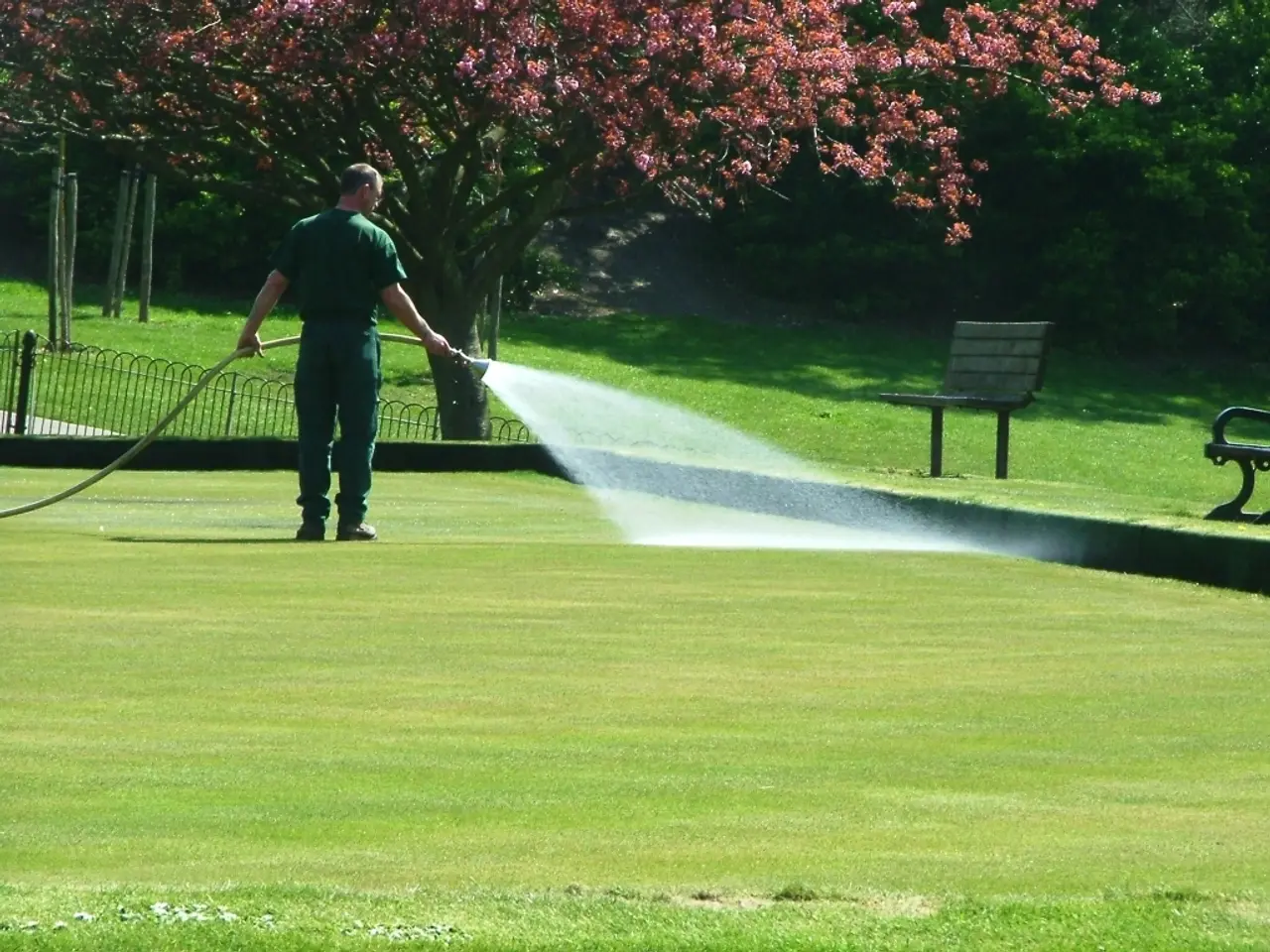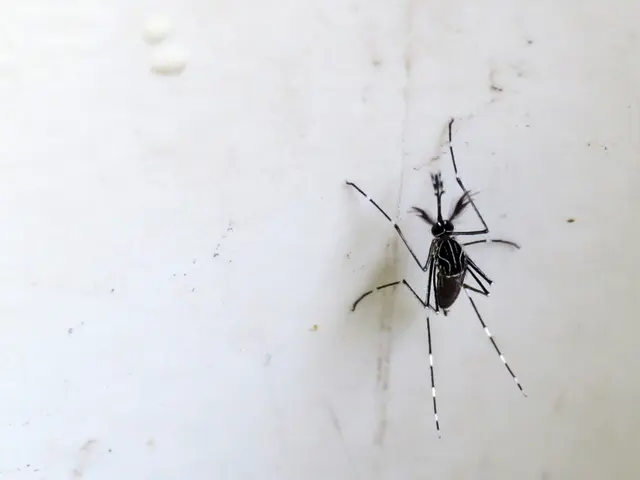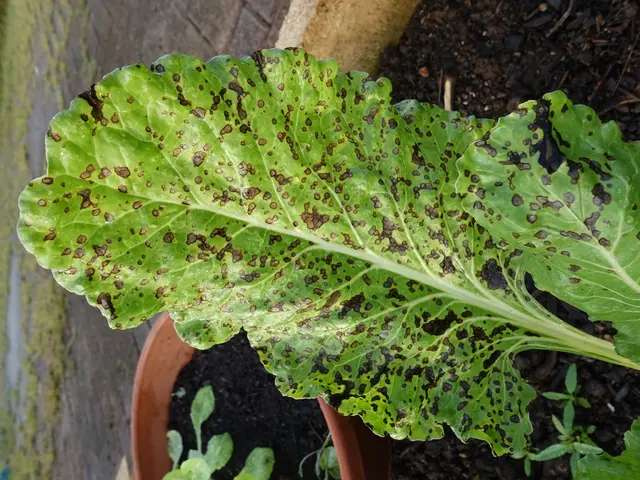Has a watering ban been imposed in the UK? Here's a quick guide explaining the essentials.
As the mercury soars in the UK, garden enthusiasts are bracing for the inevitable battle against the scorching heatwave. The sweltering temperatures of 40.2 degrees Celsius recorded at Heathrow in July 2022 shattered previous records and left many wondering if this year's summer will top the charts.
Water Conservation and Hosepipe Ban
Knowing the potential hazards of prolonged dry spells, the UK hasn't yet imposed any hosepipe bans nationwide, but the Environment Agency has issued warnings of an increasing water shortage in the years to come. The use of hosepipes in specific scenarios, like watering gardens, cleaning vehicles, or filling pools, may be restricted during a hosepipe ban, aiming to protect the river habitats where water is sourced from.
Understanding Hosepipe Ban Restrictions
A hosepipe ban prohibits excessive water usage driven by water scarcity. This involves restrictions on:
- watering gardens with hosepipes
- cleaning cars with hosepipes
- watering plants on domestic or non-commercial premises with hosepipes
- cleaning boats with hosepipes
- filling swimming or paddling pools
- recreational water use
- maintaining ponds with hosepipes
- cleaning exterior surfaces with hosepipes
During a hosepipe ban, using watering cans remains allowed, although defying the regulations can lead to hefty fines of up to £1000.
How Much Water Does a Hosepipe Use?
Every ten minutes, the average hosepipe consumes about 170 liters of water. Compared to a family of four using just a day's worth of water in a single hour with a sprinkler, smart water conservation can go a long way in nurturing your garden while being gentler on the environment.
Drought-Proofing Your Garden: Drought-Tolerant Plants
Several plants are perfectly adapted to dry soil and varied weather conditions, making them the ideal choices for low-maintenance, UK-friendly gardens.
Top Picks for Drought-Tolerant Plants
- Sedum (Stonecrop): Famed for its succulent leaves and starburst flowers, sedum plants like Sedum spurium and Sedum 'Autumn Joy' thrive in dry soil and full sun. They require minimal watering once established.
- Eryngium planum (Sea Holly): Featuring striking blue blooms, sea holly grows well in dry conditions and is a great addition to drought-prone areas.
- Creeping Thyme: This herbaceous perennial not only adds fragrance to your garden but also thrives in dry, underfoot areas.
- Erigeron karvinskianus (Mexican Fleabane): A hardy ground cover producing delicate white-to-pink flowers throughout summer, it naturally occupies bare ground and attracts pollinators.
- Campanula portenschlagiana (Trailing Bellflower): This compact perennial produces purplish bell-shaped flowers in late spring and early summer. Its trailing habit makes it suitable for adding visual interest in shady areas or cascading over walls and rocks.
- Hardy Geraniums: These perennials tolerate drought, poor soil, sun or shade, and minimal care while providing a stunning display from late spring to summer.
- Echinacea (Coneflower): Native to North America, echinacea can withstand hot, dry summers and attract various pollinators with its large daisy-like blooms.
By incorporating these drought-resistant plants into your garden design, you can maintain an attractive and resilient green space while minimizing water usage.
[1] RHS (Royal Horticultural Society). (n.d.). Drought tolerant plants. Retrieved August 4, 2023, from https://www.rhs.org.uk/advice/profile?PID=289[2] RHS (Royal Horticultural Society). (n.d.-b). Top 10 drought-tolerant plants for your garden. Retrieved August 4, 2023, from https://www.rhs.org.uk/advice/profile?PID=240[3] RHS (Royal Horticultural Society). (n.d.-c). Choosing and growing plants that tolerate shade. Retrieved August 4, 2023, from https://www.rhs.org.uk/advice/profile?PID=340[4] MyGardenSchool. (2020, January 22). 15 top plants for dry shade. Retrieved August 4, 2023, from https://mygardenschool.com/blog/15-top-plants-for-dry-shade[5] Home & Garden Ideas. (n.d.). Drought-tolerant plants. Retrieved August 4, 2023, from https://www.homeandgardenideas.co.uk/outdoor-living/drought-tolerant-plants.htm
- In the face of climate-change and increasingly hot summers, many garden enthusiasts are turning to environmental-science for drought-proofing solutions, focusing on planting drought-tolerant species like Sedum, Eryngium planum, Creeping Thyme, Erigeron karvinskianus, Campanula portenschlagiana, Hardy Geraniums, and Echinacea.
- As gardening practices become more eco-conscious, lifestyle adjustments include reduced water usage and smart water conservation measures, such as decreasing the reliance on hosepipes during dry spells, which can save as much as 170 liters of water every ten minutes.
- To avoid a hosepipe ban and protect the environment, gardeners can follow the rules set by the Environment Agency that restrict excessive water usage, including activities like watering gardens, cleaning cars, and filling pools with hosepipes.
- By prioritizing plants that thrive in dry conditions and restricted water availability, home-and-garden enthusiasts can create resilient and attractive green spaces that are not only sustainable but also require less time and resources for maintenance.
- Incorporating drought-tolerant plants into the garden design not only prioritizes the environment and supports water conservation efforts but also contributes to the lifestyle of delivering a beautiful garden that persists even in the harshest climates.








